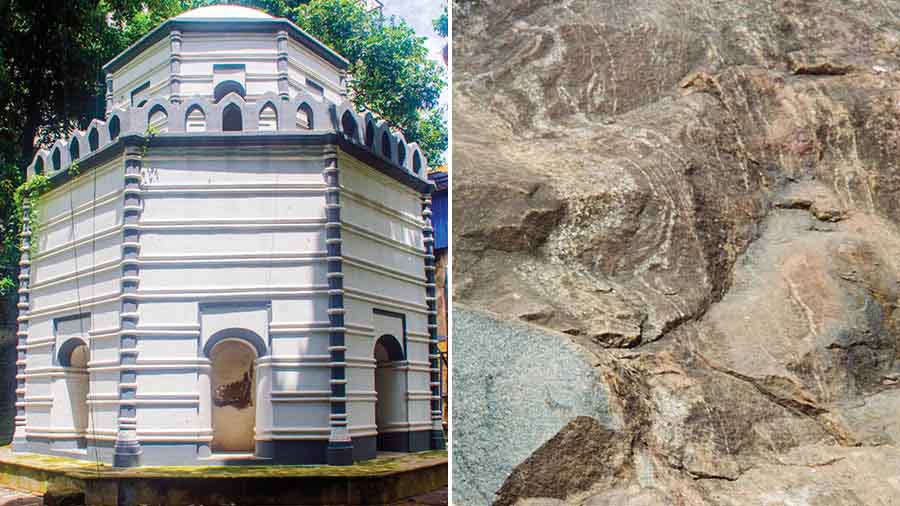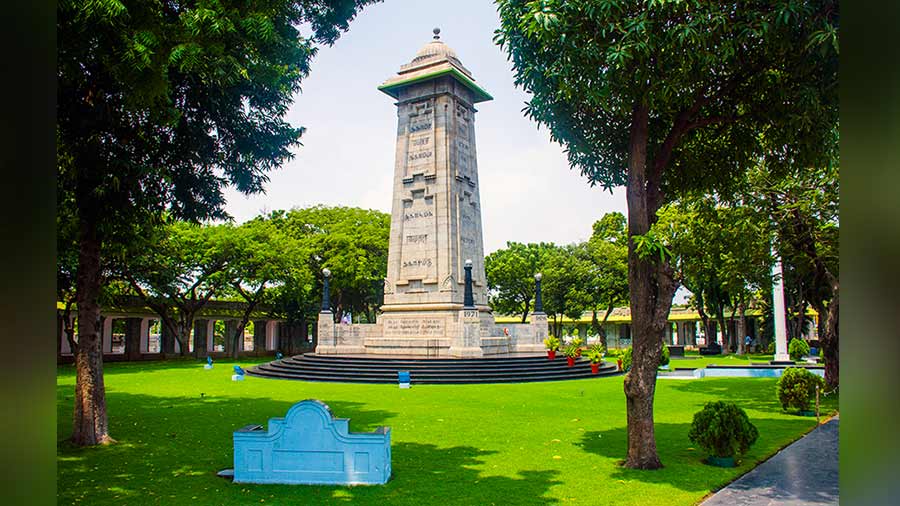Located on the Beach Road in Madras (now Chennai) stands Fort St George, the first British fortification of the Indian sub-continent. Today, the fort complex houses several offices of the Tamil Nadu state government along with the Fort Museum and St Mary’s Church.
History
The permission to build the fort was obtained from the local raja of Chandragiri (now in Andhra Pradesh) in 1639. The fort was completed on April 23, 1644, coinciding with St George’s Day, celebrated in honour of the patron saint of Britain. The fort was hence christened as Fort St George. The fort served as the headquarters of the East India Company in south India. As the fort grew, the small sleepy fishing villages along the Bay of Bengal turned into a mighty colonial fortification and a hub of business activity.
The fort in the present day
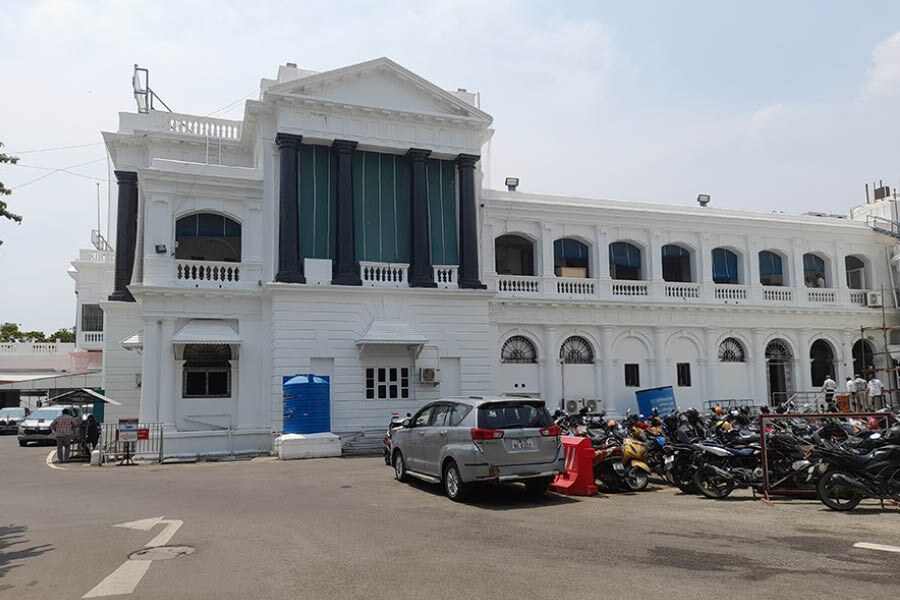
Office building in the fort complex
The St George Fort complex now houses the Tamil Nadu Legislative Assembly and several other offices of the state government. Several of the colonial buildings, which were once part of the fort, now houses offices of various departments. In spite of the buzzing office activities, the area still has a colonial charm. The fort complex is still surrounded by a high wall and surrounded by a moat. The complex also houses several cannons, many of which has been captured from Haider Ali and Tipu Sultan during the Mysore Wars. Although the fort complex is open to general public but interiors of most of the buildings are not accessible. The only two exceptions are the Fort Museum and St Mary’s Church.
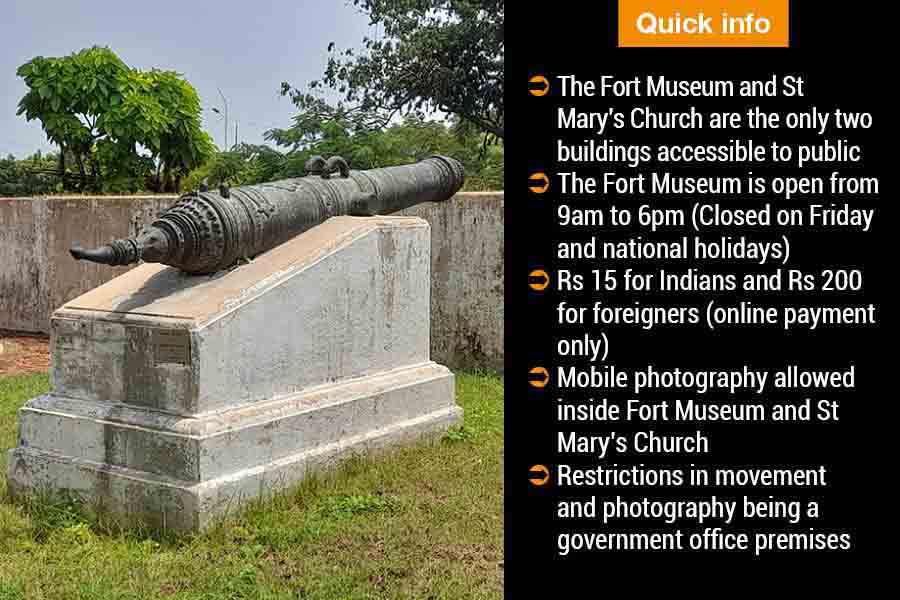
The empty pavilion
Just beyond the entrance, visitors are greeted by a Greek-styled pavilion. The small but elegant pavilion stands on a small garden and is supported by eight pillars. Although presently empty. it has not always been empty. It once housed the beautiful marble statue of Lord Cornwallis. The statue was a masterpiece by renowned sculptor Thomas Banks and was installed in 1800. The marble pedestal of the statue has a bas-relief of the Cornwallis receiving the two sons of Tipu Sultan as hostage. Sadly, the statue has been removed. Don’t be disheartened! Now, it stands inside the Fort Museum located at a stone’s throw distance from the pavilion.
Fort Museum

The baptism font at St Mary’s Church, where Job Charnock’s three daughters were baptised
The building of the Fort Museum dates back to 1795 and was raised from the profits of the lottery committee. The building had a multipurpose use. It was used as a warehouse, officers’ mess, brokers’ office and even a coffee room. Since 1948, the building houses the Fort Museum. Presently, the museum houses 10 galleries spread across three floors. The base of the staircase houses the statue of Lord Cornwallis which was removed from the nearby pavilion. The base also houses a couple of more statues.
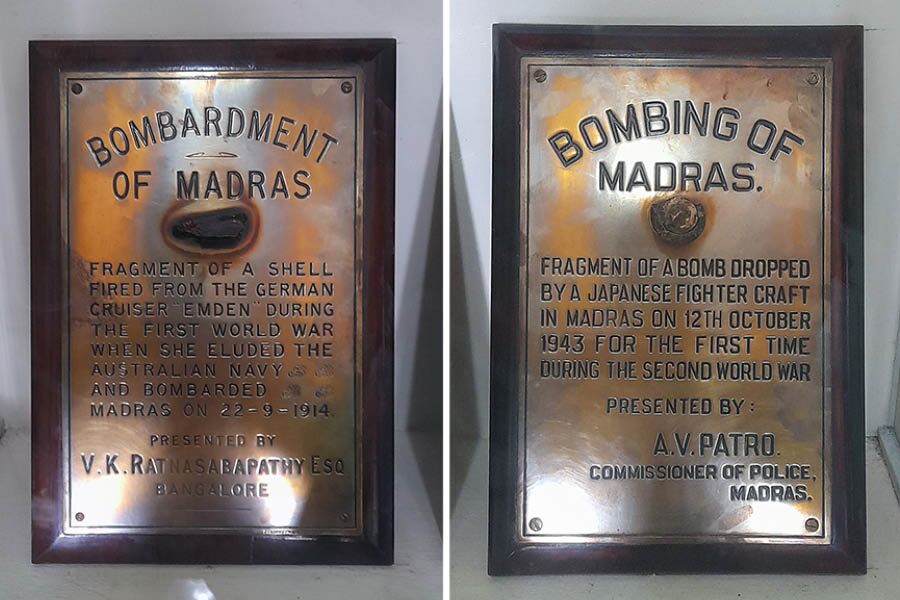
Fragments of shells from the two World Wars
Apart from the statues, the ground floor contains four galleries. These include the arms gallery, uniform and medal gallery, porcelain gallery and miscellany gallery. The museum exhibit fragments of shells fired during the two World Wars. This include a fragment of shell fired from the German ship, Emden, which happens to the only World War I attack in India. The first floor has the portrait and print galleries and displays a variety of colonial paintings and print. The top floor displays a National Flag hoisted on August 15, 1947.
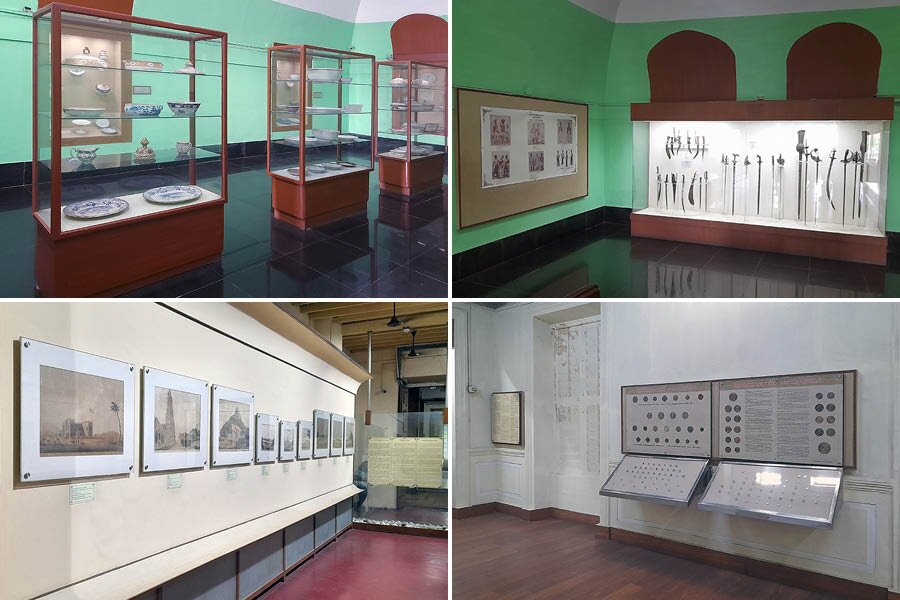
(Clockwise from top left) Porcelain gallery, Arms gallery, Coin gallery and Print gallery at the museum
St Mary’s Church
The St Mary’s Church came up in 1680 and is the oldest masonry structure of the St George Fort. It also happens to be the oldest Anglican Church of the sub-continent. The church with its milk-white spire dominates the fort skyline. The interiors are complete with a beautiful altar depicting the Last Supper. Several ornate marble plaques and intricate stained-glass windows are part of the church ornamentation.
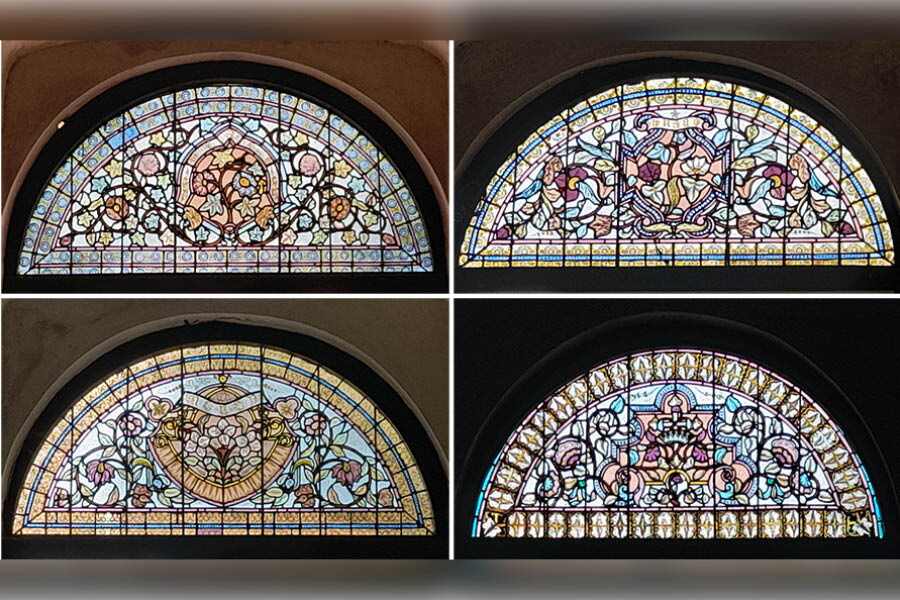
Collage of stained glass windows at St Mary’s Church
The church played a vital role in the lives of several British officers, who shaped the colonial history of the sub-continent. These include Lord Clive and Job Charnock. Clive was married in this church in 1753 and three of Job Charnock’s daughters were baptised in this church. The baptism font (tub used for baptism), which can still be seen to this day, was made of a special type shining stone. The stone was later named as Charnockite, after Job Charnock. Incidentally Charnock’s tomb in Kolkata is also built of the same stone.
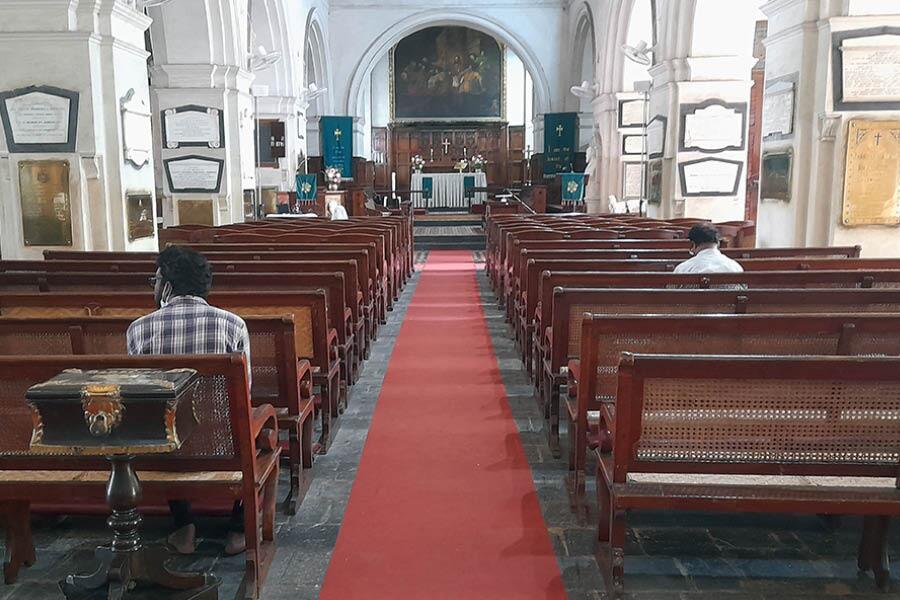
The interiors of St Mary’s Church

